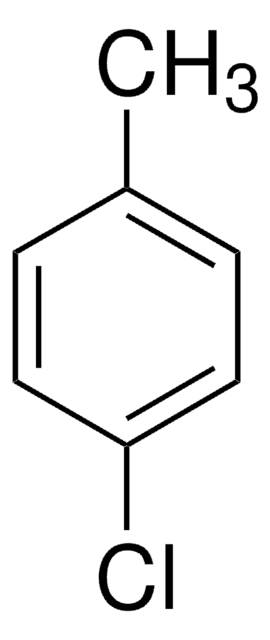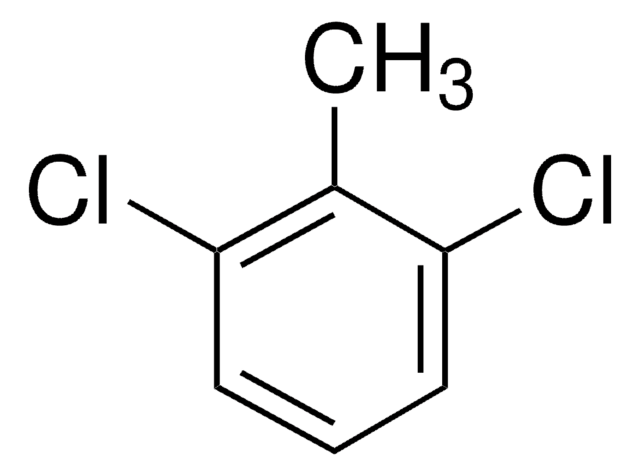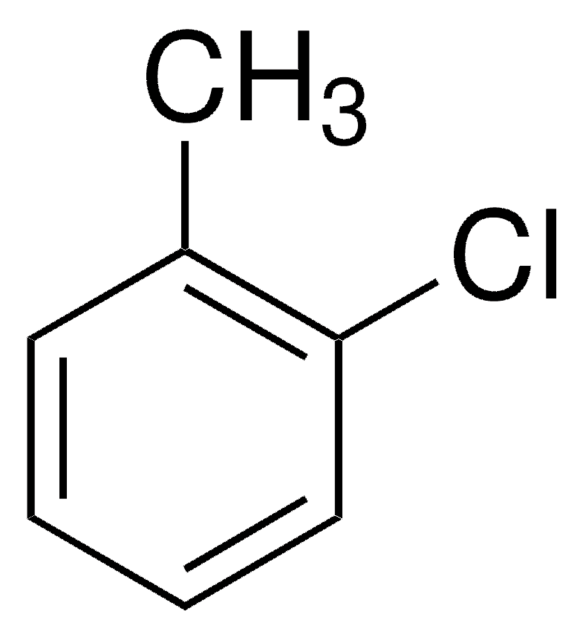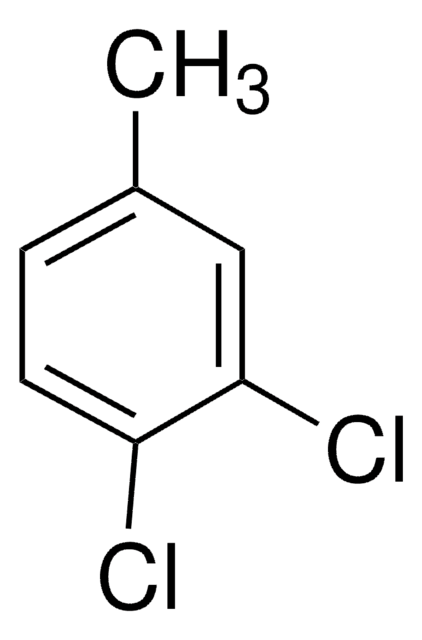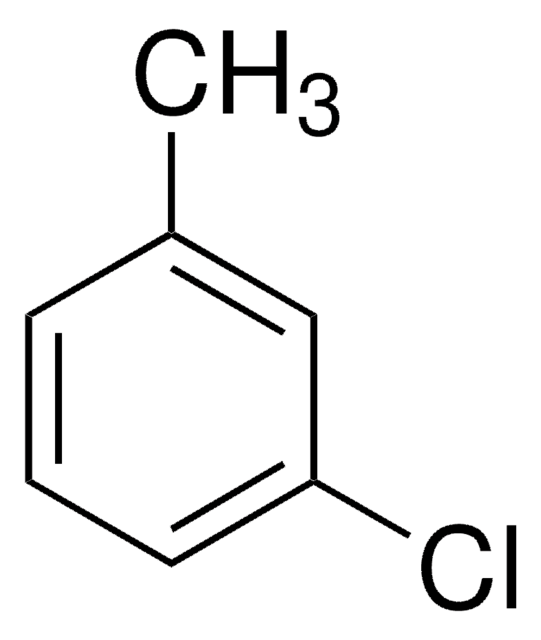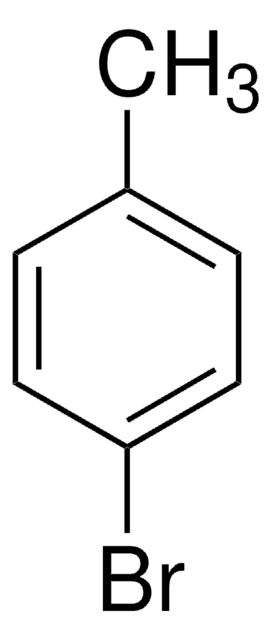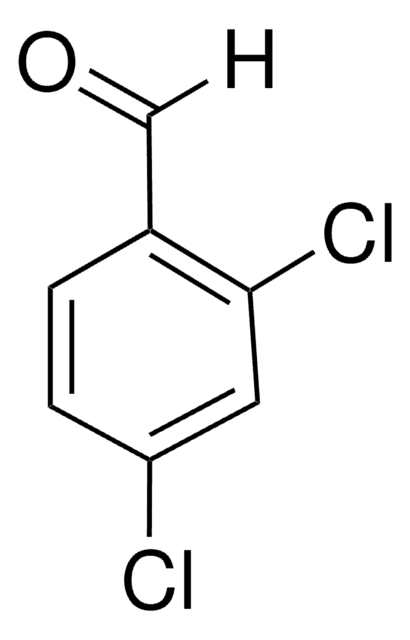추천 제품
애플리케이션
2,4-Dichlorotoluene was used as an oxidant and a solvent during anaerobic catalytic oxidation of secondary alcohols by using an in situ (N-heterocyclic carbene)-Ni(0) system. It was used as growth supplement in the culture media of Ralstonia sp. strain PS12. It was used to develop a sensitive method based on solid-phase microextraction followed by gas chromatography-tandem mass spectrometry for the analysis of chlorotoluenes in water samples.
유해 및 위험 성명서
예방조치 성명서
Hazard Classifications
Aquatic Chronic 2
Storage Class Code
10 - Combustible liquids
WGK
WGK 2
Flash Point (°F)
174.2 °F
Flash Point (°C)
79 °C
개인 보호 장비
Eyeshields, Gloves, type ABEK (EN14387) respirator filter
이미 열람한 고객
[Gas chromatographic determination of 2,4-dichlorotoluene in water].
T A Kozeĭko et al.
Gigiena i sanitariia, (3)(3), 44-45 (1988-03-01)
V Karunakaran et al.
Spectrochimica acta. Part A, Molecular and biomolecular spectroscopy, 95, 64-72 (2012-05-23)
The FT-IR and FT-Raman spectra of α-bromo-2,6-dichlorotoluene (αBDCT) have been recorded. The structural and spectroscopic data of the molecule in the ground state have been calculated using Hartree Fock (HF) and Density Functional Theory (DFT)/B3LYP with the standard 6-31++G(d,p) basis
Omid Khakshoor et al.
Journal of the American Chemical Society, 134(6), 3154-3163 (2012-02-04)
We address the recent debate surrounding the ability of 2,4-difluorotoluene (F), a low-polarity mimic of thymine (T), to form a hydrogen-bonded complex with adenine in DNA. The hydrogen bonding ability of F has been characterized as small to zero in
Christophe Berini et al.
Chemistry (Weinheim an der Bergstrasse, Germany), 16(23), 6857-6860 (2010-05-11)
The selective, anaerobic catalytic oxidation of secondary alcohols at room temperature by using an in situ (N-heterocyclic carbene)-Ni(0) system is presented. The use of non-anhydrous, non-degassed 2,4-dichlorotoluene as both the oxidant and the solvent allows for very short reaction times
Katrin Pollmann et al.
Journal of bacteriology, 184(19), 5261-5274 (2002-09-10)
Ralstonia sp. strain PS12 is able to use 2,4-, 2,5-, and 3,4-dichlorotoluene as growth substrates. Dichloromethylcatechols are central intermediates that are formed by TecA tetrachlorobenzene dioxygenase-mediated activation at two adjacent unsubstituted carbon atoms followed by TecB chlorobenzene dihydrodiol dehydrogenase-catalyzed rearomatization
자사의 과학자팀은 생명 과학, 재료 과학, 화학 합성, 크로마토그래피, 분석 및 기타 많은 영역을 포함한 모든 과학 분야에 경험이 있습니다..
고객지원팀으로 연락바랍니다.